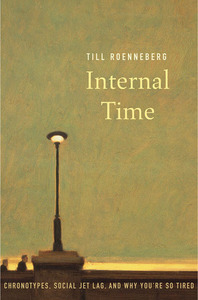Take a photo of a barcode or cover
informative
medium-paced
I was a bit disappointed by this book. It was recommended by Gretchen Rubin and maybe Daniel H. Pink and I wanted to learn more about chronotypes, but feel I just learnt more about sleep science. I had seen pithier explanations of chronotypes elsewhere, which don't feature in this book.
It's interesting though and has a bizarre structure. Each chapter starts with a story which is half riddle, half example, followed by a scientific explanation. Publisher hat on, I'm not sure I'd have structured the chapters as written as it felt more like separate entities than a cohesive whole.
It's interesting though and has a bizarre structure. Each chapter starts with a story which is half riddle, half example, followed by a scientific explanation. Publisher hat on, I'm not sure I'd have structured the chapters as written as it felt more like separate entities than a cohesive whole.
Disappointing. It didn't know whether it was a textbook (second halves of the chapters would have been ok as an introductory textbook) or pop-sci (those increasingly irritating stories at the start of each chapter). Ended up nowhere and failing to answer many of its own questions.
I listened to the audiobook and admit it may have been better as a paper read than a listen.
I listened to the audiobook and admit it may have been better as a paper read than a listen.
Langdradig, voor mijn gevoel had het gehele boek 80% korter kunnen zijn met dezelfde informatie.
Entertaining and very instructive. I learned a lot reading it.
informative
I *wanted* to like this book, but I felt I got more out the NY Times (I think) article where I heard about this book in the first place. I can't help but wish that Mary Roach had written about sleep...because at least I wouldn't have felt like sleeping while reading this book. Ha...ha? Get it? Anyway. Didn't love it; felt it was too heavy on statistics and boring explanations. Shame.
informative
Fairly scientific discussion of our internal clocks, but interesting and well-presented. The chapters creatively were split between fictional stories and the science behind the story, which made the science easier to understand and more approachable for the layperson.
challenging
informative
slow-paced




